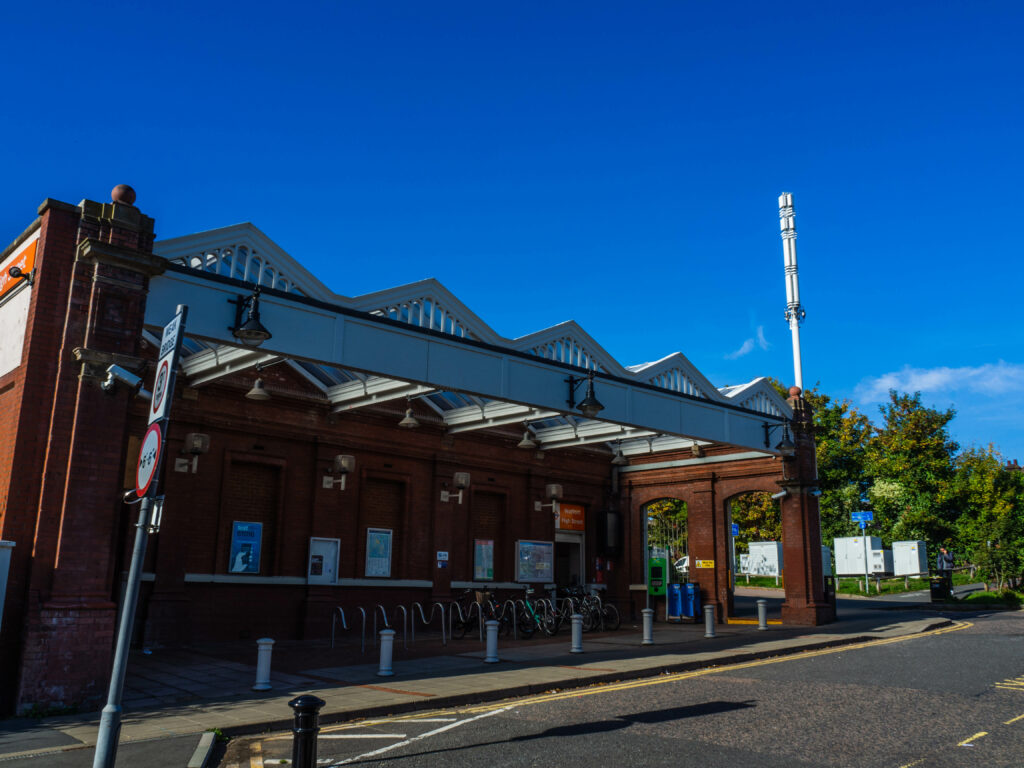Twinfix has been utilising its skills and expertise to restore part of the historic Watford High Street Station, returning the station’s entrance to its former glory.
By using its Multi-Link-Panel Non-Fragile glazed with 6mm solid Georgian wired effect polycarbonate glazing system, it has brought this landmark up to date with sustainable materials, while keeping the look and feel of the original.
Watford High Street Station was originally opened over 160 years ago by the Watford and Rickmansworth Railway (W&RR), offering services from Watford Junction to Rickmansworth. Over its lifetime, the station has been owned by several rail companies including the London and North-Western Railway (LNWR) and London, Midland, and Scottish Railway (LMS).
In the early 20th century additional rail services were added. These include a branch line to Croxley Green in 1912. In 1917, the Underground Electric Railways Company of London extended its Bakerloo line through this station to Watford Junction and, in 1922, LNWR completed the Camden to Watford Junction Line linking Watford High Street to London Euston via the Watford DC Line (shared with the Bakerloo line). In 2007, the line was brought under the control of Transport for London (TfL), which today operates it as part of the London Overground network.
To the east of the railway is the site of the Benskins Brewery, the building which is now the location for the Watford Museum. The brewery was rail-served by sidings until 1956. The station is situated in a deep cutting covered by a single platform canopy. The roof of the canopy is connected to the concrete-sided cutting by ornamental metal trusses. Outside the front of the station, is a distinctive glazed entrance canopy providing shelter from the weather and a historic landmark for the town.

After decades of use, the old entrance canopy and glazing were showing signs of age. The wood framing around the glazing was rotten and decaying, the plaster work was broken and missing, and the whole canopy needed a refresh. With the glazed canopy being such a long-standing landmark, it fell to Twinfix to replace the distinctive glazing panels with something hard wearing, sustainable and modern but without losing the period look.
Twinfix supplied its Multi-Link-Panel Non-Fragile (NF) glazed with 6mm solid Georgian wired effect polycarbonate glazing system, and the innovative system was installed by RailX UK Ltd. A slight redesign of the original allowed access hatches to be installed, making maintenance easier. Once installed it’s almost impossible to detect that modern materials that have been used to bring this important structure back to life. The polycarbonate will resist ageing and UV degradation and, along with the aluminium support frames, the system is completely recyclable.
Vicky Evans, director at Twinfix, said: “We are proud of the finished product and that we were able to offer a long-term solution that delivers the aesthetic charm of the old roof, increases light levels for passengers, improves safety for all using the station, and offers a sustainable, future proof outcome. We look forward to being part of delivering more excellent results for our clients in the future.”
Image credit: Twinfix

